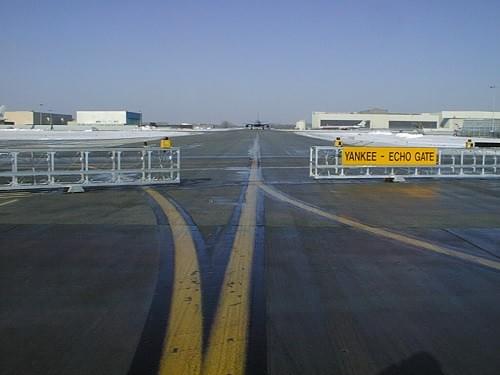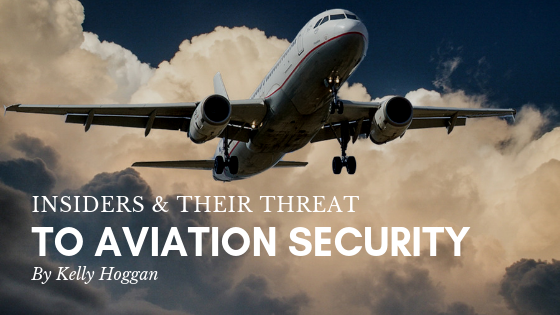From H4 Solutions:
June 14, 1985: TWA Flight 847, a Boeing 727-200 that had begun its journey earlier in the morning in Cairo, Egypt, was hijacked after it left Athens, Greece. It was initially scheduled to fly to Rome, Italy and then Boston and, finally, San Diego in the United States, meaning most of its passengers were U.S. citizens. Western intelligence sources believe the hijackers, who used a pistol and two grenades, were members of Hezbollah, the radical jihadist terror group operating out of Lebanon in the Middle East. The hijacking resulted in the murder of a U.S. Navy diver, Robert Stethem, and dozens of other passengers were held hostage in Beirut over two weeks until their release by the hijackers.

April 28, 2011: Law enforcement agencies in Detroit, Michigan, and Houston, Texas arrested a dozen people in connection with a drug smuggling operation. In it, large quantities of marijuana were brought from Jamaica into the two American cities via planes flown by Delta Air Lines and Northwest Airlines. The two airlines had merged the year before, but their employee groups and aircraft were still not fully integrated at the time).
December 10, 2014: A New York man was arrested that day by Big Apple law enforcement and charged with gun running. Over several months, he’d smuggled at least two AR-15s in addition to approximately 129 handguns into the city, often while flying from Atlanta’s Hartsfield-Jackson International Airport to JFK International Airport to do so. Once in New York, the firearms were believed to have found their way into Brooklyn’s criminal underworld.
The above three incidents, though not alike in the crimes committed, do have common elements which bind them together. For one, airlines and their planes were the locus of the terror act, in the case of the TWA hijacking, or were used at least in part to carry out the crimes (in the latter two examples). Also, all three events were made possible only through the active participation of airport or airline employees.
In the TWA hijacking, aircraft cleaners or caterers hid a pistol and grenades in the airliner’s lavatories while it was being serviced in Athens before its departure for Rome. At the time, Athens’ airport suffered from relatively weak security and only minimally vetted employees granted access to secure areas of the airport, including the tarmac and the planes on it.
In the second instance, 10 of the 12 people arrested in the Jamaica-Detroit/Houston drug smuggling operation were current or former employees of either Delta Air Lines or Northwest Airlines. The active employees used their airport badges to bypass security screening at the various airports and either load the marijuana onto planes in Jamaica or deliver it, once it was unloaded from planes in Detroit or Houston to confederates waiting at the two airports’ baggage carousels. In all cases, employees bypassed measures used to screen people as well as luggage going onto or coming off planes.
The Atlanta-New York gun-running scheme was aided in large part by a Delta Air Lines ramp agent, who also used his security badge to bring guns into the airport’s secure areas, where he’d pass them along to the New York-bound gun mule. The smuggler would then board a Delta flight to JFK along with a carryon bag, which would be empty when he went through the airport’s security checkpoints but which he’d filled with guns and other items once he’d successfully passed through security screening.
The Air Line Pilots Association, a commercial airline pilot union, describes an aviation insider as… “someone with authorization and unescorted access to secure parts of an airport and/or aircraft.” ALPA concedes that insiders can pose a threat to airline passengers and crews as well as cargo and the planes everything flies on, though the union also correctly points out that the incidence rate, at least in the U.S. is small. Still, as the group notes, the U.S. government as well as the aviation industry must always be on guard against the insider threat and tirelessly work to ensure such dangers are eliminated before they come to fruition.
But how do you eliminate such threats when aviation security (as also pointed out by ALPA), like security in almost every industry, is based on trust in the individual employee or worker? Generally, aviation insiders granted access to secure areas of an airport undergo background checks and investigations, which are commonly known as “vetting.” But how thorough is such vetting? What do such background investigations look for? How far back do they go, and what “red flags” – such as felonies or misdemeanor crimes – prevent the issuance of airport security credentials?
How thoroughly are aviation insiders screened when they access an airport’s secure areas, including when they enter airliners to work on them? Are they tested every time they access secure areas or just once for the day? Is such screening random, or is it always required?
Also, are vehicles with airport access privileges, along with the aviation insiders driving them, screened 100-percent of the time or on a random basis?

Lastly, how frequently are aviation insiders’ credentials checked? How often are airport and airline workers’ backgrounds screened? Just once, or every time they renew them? We’ll soon explore these vital questions in the upcoming third part of this series.
Kelly Hoggan, Founder and CEO of H4 Solutions, previously served as assistant administrator for operations at the Transportation Security Administration. In that role, he was responsible for aircraft and checkpoint security operations at the nation’s 400-plus commercial airports.


